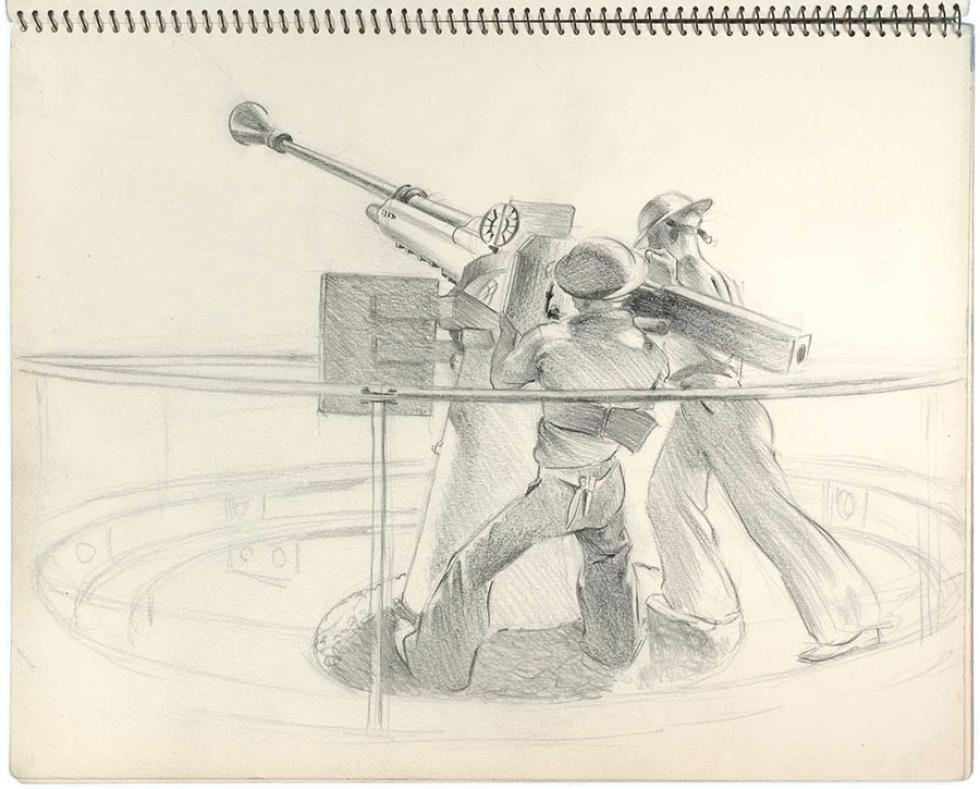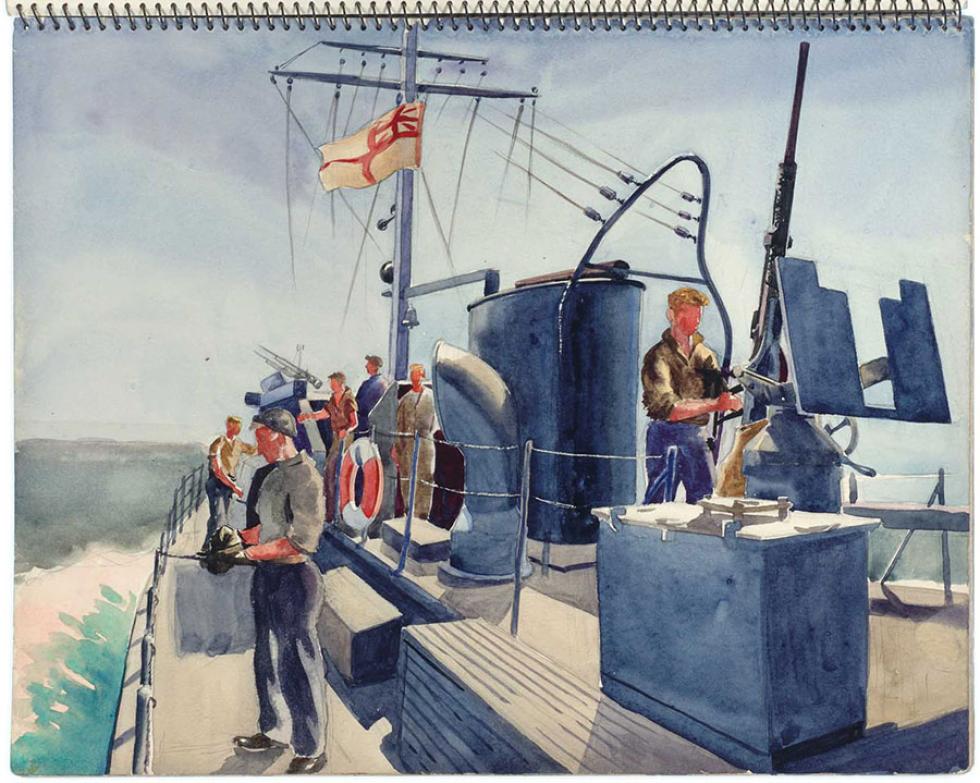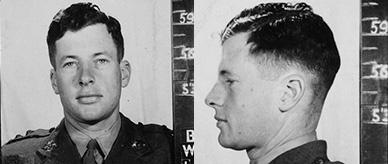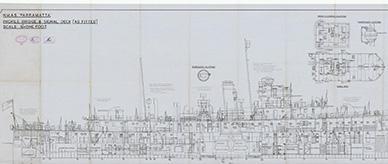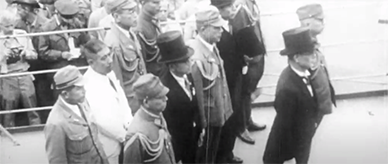As the world marks 75 years since the end of the Second World War, we're highlighting the work of Able Seaman Rex Julius, a little-known war artist commissioned by the Australian War Memorial and Australian Military History Section in 1944.
War art gave the public a fresh perspective on a war that raged on frontlines far from home. Sketches and paintings sent back to Australia were exhibited in galleries or published in magazines and newspapers.
Rex Julius's charcoals and watercolour sketches capture human moments against the backdrop of a ferocious naval war. We see navy men swimming in the water beside their ship as a watchful mate looks out for sharks. Back on board, the men play cards, sew and write letters home.
An artistic pedigree
Rex Julius was born in 1914, the son of Henry 'Harry' Julius. Harry co-founded the commercial art firm Smith & Julius and was known for his caricatures. Later in his career, he formed a separate company specialising in animated cartoon advertisements.
Rex initially followed in his father’s footsteps as a commercial artist. In 1940, he enlisted in the Royal Australian Navy. Rex trained in submarine detection, but the navy appointed him an official war artist in 1944 after senior officers saw a portfolio of his personal sketches.
Sketching HMAS Rushcutter
Rex's first official sketches are of activity around the naval base HMAS Rushcutter in Sydney, particularly the operation and launch of Australian-built Fairmile vessels.
His style is distinct, with strong outlines and bold shading. Several of the Fairmile sketches were published in the April issue of The Australasian.
Julius’s Rushcutter sketches also feature members of the Women’s Royal Australian Navy (WRAN) going about their duties.
Spud barbers and tommie guns
Julius made a second series of sketches aboard the HMAS Lithgow while travelling to Milne Bay, Papua New Guinea. These appealing character studies show servicemen at work or at rest.
The accompanying descriptions add to the appeal. A drawing of two men peeling potatoes has the description 'Spud barbers. A good bludge this because no one stands over you'. A picture of men swimming off the side of the Lithgow particularly mentions the man keeping watch '…with a tommie gun in case of sharks.'
Death and legacy
While many Australian war artists went on to have prolific careers, Rex's tenure was cut tragically short. After only a few months as an official war artist, he died of a throat abscess and gangrene in Papua New Guinea in May 1944.
Although his younger sister Ruth carried the Julius family's artistic legacy into the 1970s, Rex never received much recognition for his brief yet promising career.
But now everyone can enjoy the work of this underappreciated Australian artist. Visit the National Archives' Flickr page to view Rex Julius’s wartime sketchbooks and take a peek into the lives of our Second World War servicemen.

![Pencil drawing: WRAN driver standing beside her utility vehicle [ute].](/sites/default/files/styles/banner_image_general/public/2020-02/banner-STD-blog-Rex-Julius-9544589-6.jpg?itok=6-iv9or-)
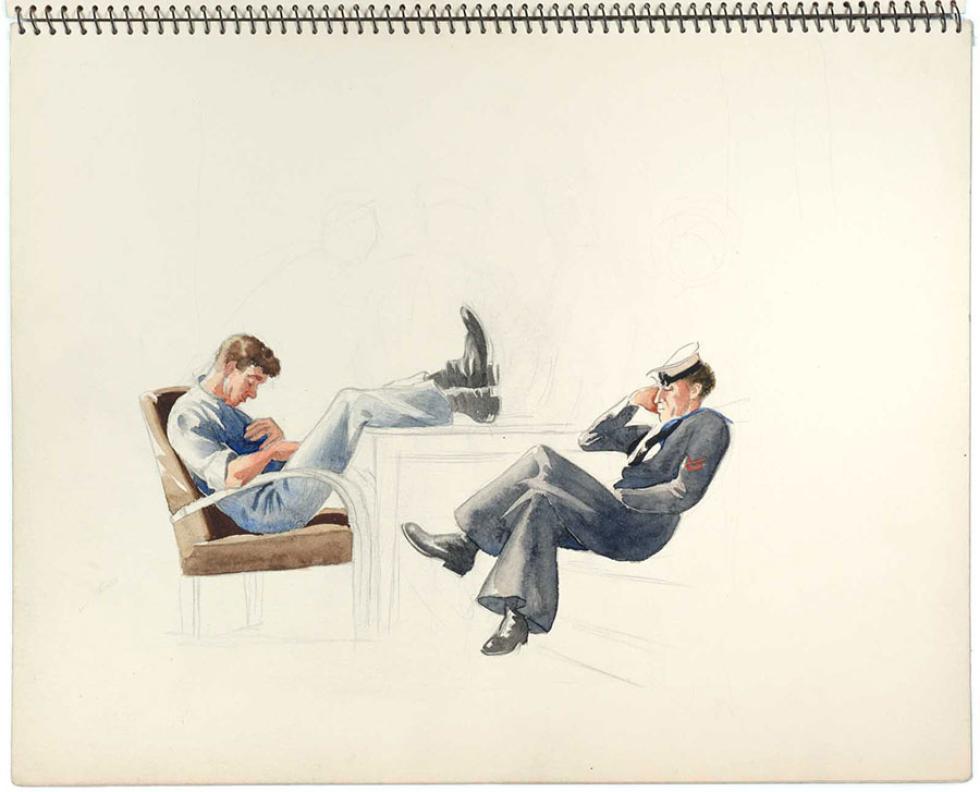
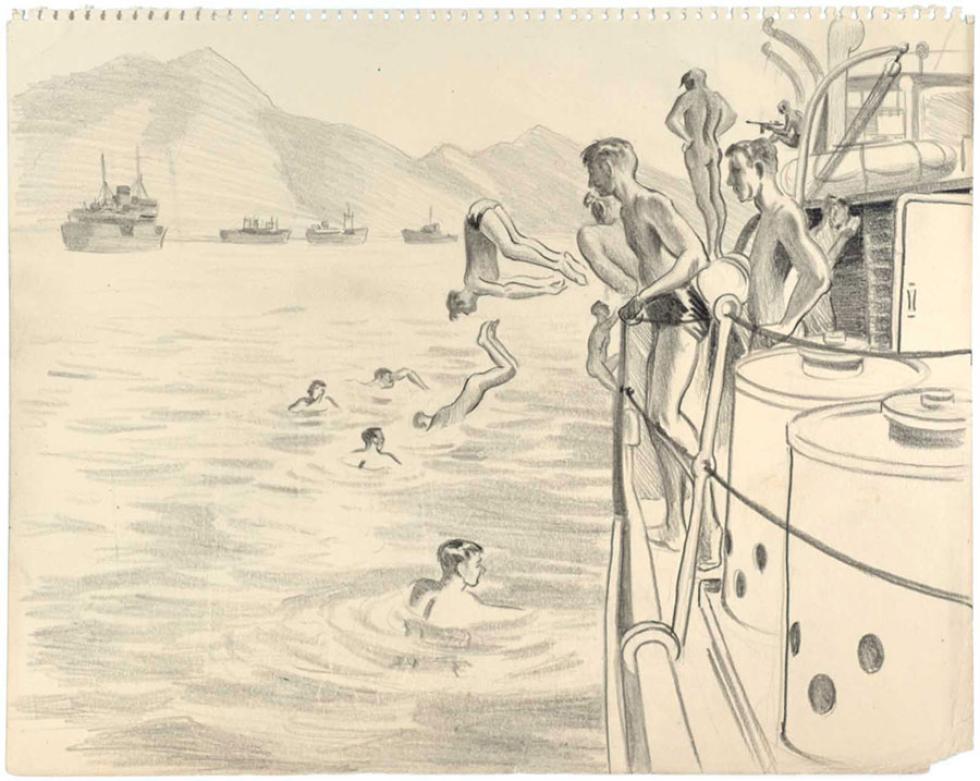
![Pencil drawing: WRAN driver standing beside her utility vehicle [ute].](/sites/default/files/styles/carousel_single_image_display/public/2020-02/carousel-lrg-blog-Rex-Julius-9544589-6.jpg?itok=CoiyniXQ)
